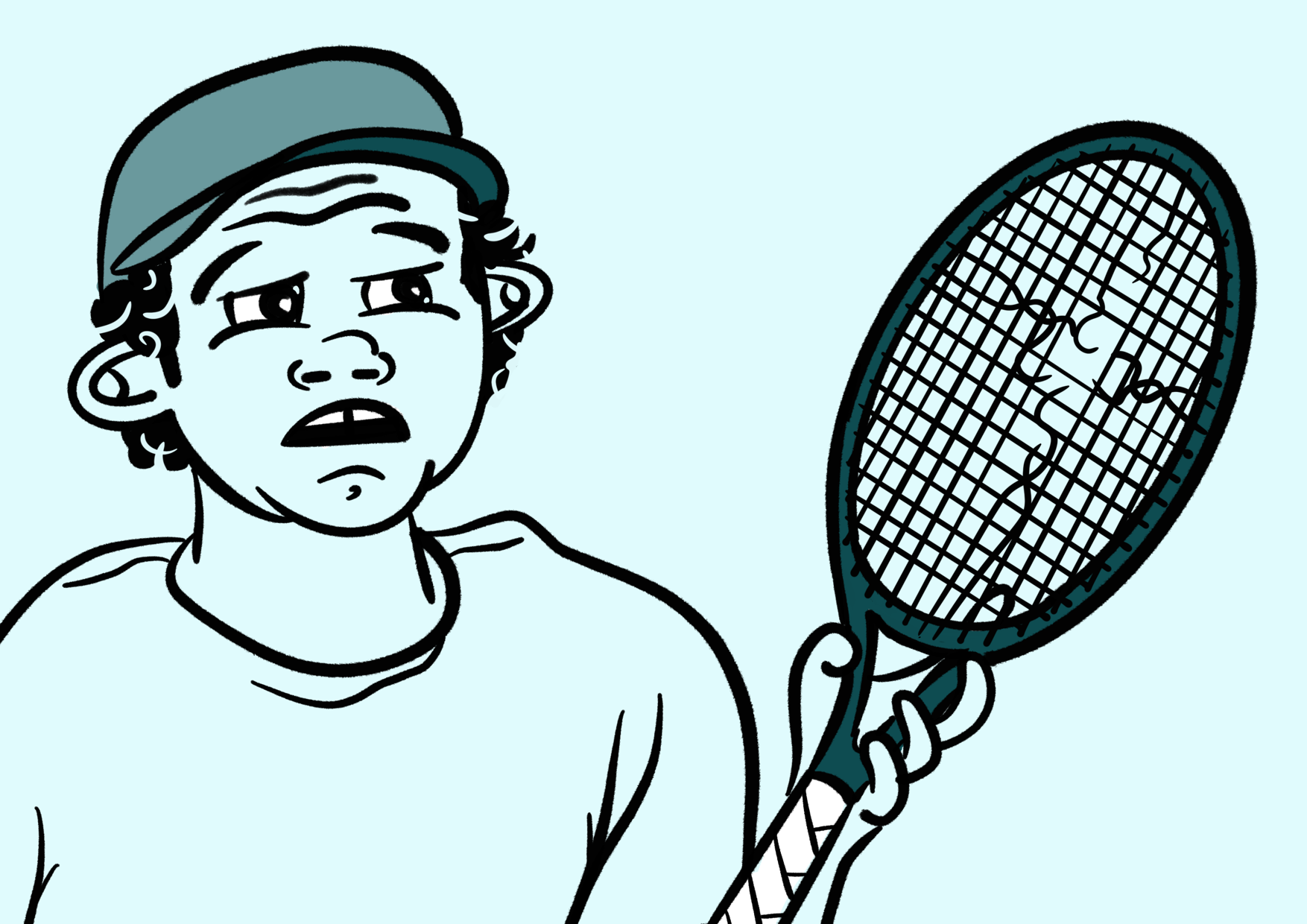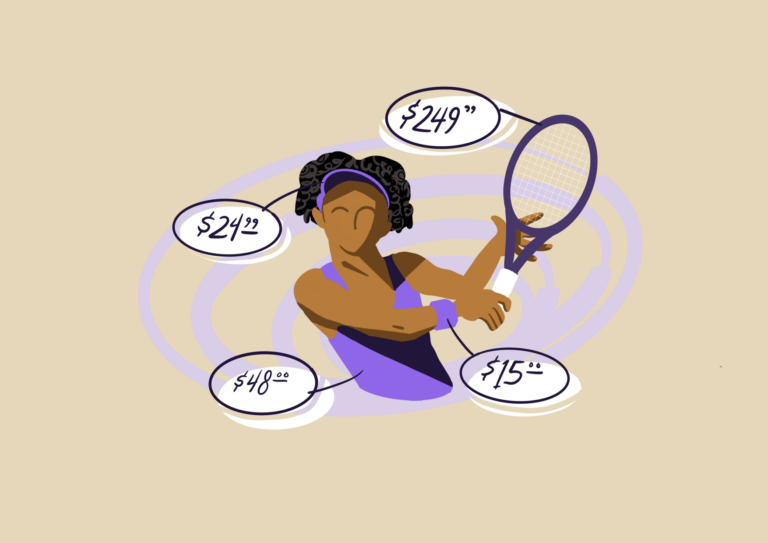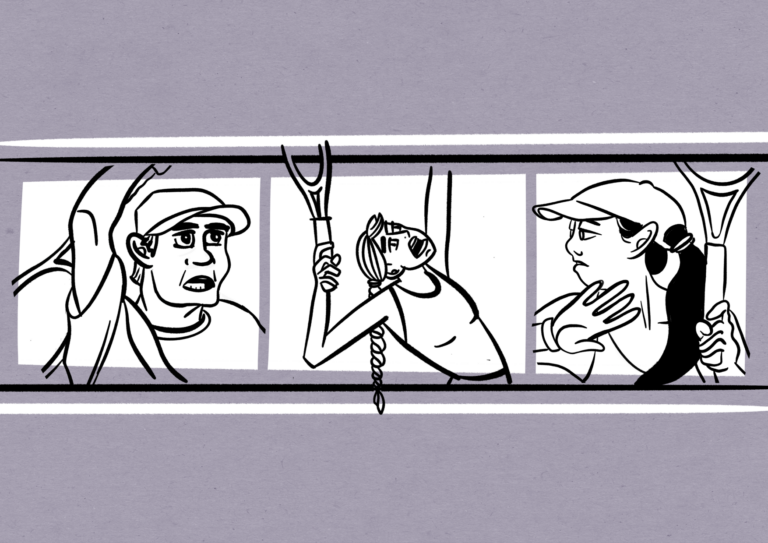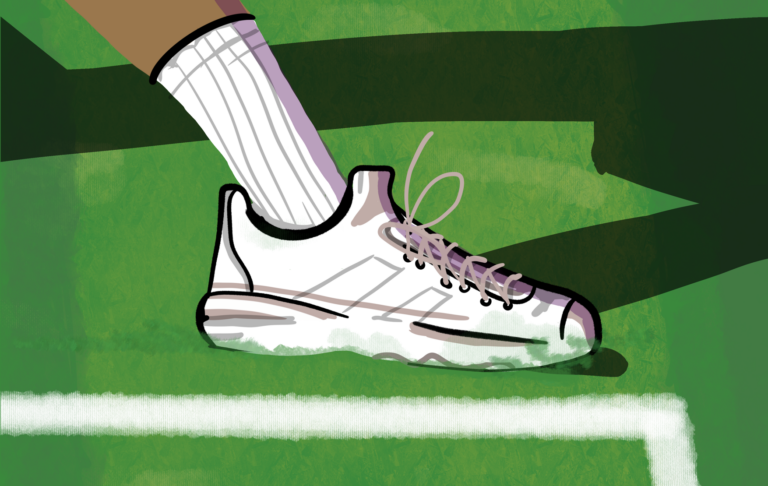What is the Cost of Restringing Your Tennis Racquet?
The more tennis you play, the more you realize that your racquet is not immortal. Eventually, there will come a time when the strings on your racquet break, perhaps mid-match or mid-practice after hitting a wonky shot. Or you’ll realize that the tension–the weight on the strings–is loose and your racquet doesn’t feel the same. At some point, in your tennis career you will have to get your racquet restrung. Discover the costs that go into restringing, how often you should get it done, where to get it done, etc.
Cost of Restringing a Tennis Racquet
How much does it cost to restring a tennis racquet? The short answer is, it depends. There are two costs to keep in mind here–the cost of the strings and the labor cost. Most likely, depending on your tennis experience, you won’t be stringing yourself. Getting a stringing machine is expensive on its own, and while you’re still learning the ropes of the sport, it’s best to have somebody who has expertise in stringing to handle your racquet.
New Strings Cost
When you get your racquet strung, part of the cost that goes into this is the string. Some stringers will include this in their fee at a standard rate. With other stringers, you have the option to buy a roll, which can be cheaper, because then you will only pay for the “labor cost” and your own string, rather than a general string fee. Another option is to bring your own string. In general, a roll of string can cost anywhere from $6 to $80. This is why it’s important to decide what string you should use with consideration.

What string should you use?
Deciding what kind of string to use when getting your racquet strung is crucial to the performance of the racquet. Stringing your racquet incorrectly is like trying to fuel your body with candy for breakfast, lunch, and dinner. General factors for determining what kind of string to use include price point, your playing style, and your tennis level.
- Synthetic gut (nylon): If you are just starting out and want to get the cheapest, most durable option, synthetic gut is a good choice. This is considered “one of the best value strings of all time” and will cost you less than $10. You’re saving your bank account a lot with this type to begin. For a cheap price, it’s a solid string type.
- Natural gut: Natural gut is generally seen as the most desirable string type, but it’s the priciest. Players like this string type because it holds the tension for a long period of time and is considered super playable. If you’re not concerned about the price point and not sure if you need more power or control, this is a good choice.
- Multifilament: Made by wound fiber, multifilament is suited for players who want more power. With this string type, you’re trading off some control for power, generally. You can find multifilament strings for many different prices, but generally on the cheaper side. If you need something durable and want to add some power to your game, this is a good choice.
- Polyester: Polyester is growing in popularity for intermediate-professional players. If you’re a beginner, steer away from polyester for now, only because this string type is geared towards those who hit quickly with spin. If you want lots of control, polyester is for you. If you’re an intermediate player who plays frequently and needs something durable, this string type is a good choice.
Labor Cost
Now that you know the string types, remember that is only one half of the stringing cost. The other half is labor cost. This cost varies depending on whether you have a coach, trainee, or an experienced stringer do your racquet. The labor cost can be anywhere from $5 to $40 depending on where you’re getting your racquet strung. Be sure to price shop before you get your racquet strung and discuss options with the stringer. Discuss the tension, or how much weight you need on the string, for your playing style. Don’t worry, you don’t need to know exact numbers here–an experienced stringer will be able to help you out. If you don’t know where to find a stringer near you, contact local sporting stores, country clubs, tennis coaches, fellow tennis players, or even reach out to young advanced tennis players. There’s a variety of options available, all with different price points.
Racquet String FAQs
Can You String A Tennis Racquet Yourself?
Simply put, yes, you could. The issue here is the price and expertise. Learning how to string a racquet is not the same as learning how to put an overgrip on a racquet. Stringing is a very nuanced process that requires someone with experience and expertise, depending on what tension you want to achieve. If you’re interested in learning about stringing, watch YouTube videos or ask a stringer if you can shadow them. If you do learn how to string, you can contact local tennis facilities to ask if you can use their machine in order to string your own racquets. There are a variety of stringing machines out there, ranging from manually-operated devices that require you to crank them to computer-controlled electric machines.
How Often Should You Get A Racquet Restrung?
The classic rule is, however many times a week you play, you should get your racquet restrung per year. However, take this with a grain of salt. Know that if you’re playing twice a week, the bare minimum would be to get your racquet restrung twice a year. Your game can be affected by lost tension when your strings are older. With less tension, your ability to control the racquet ultimately affects your game. In fact, less tension can even cause elbow and arm discomfort, so if you know you’re prone to injuries, consider re-stringing your racquet more frequently.

Depending on your level, you might want to get your racquet restrung more frequently. If you’re a beginner playing once a week, then restringing your racquet 1-3 times per year is suitable. Ultimately, this decision depends on the player. Professionals break their racquet strings at a much higher rate than a recreational player. Other factors to consider are the environment (be sure to google how your string type adapts to the conditions you’re in), the way you play (if you play super aggressively and hard, consider re-stringing more often), arm/elbow discomfort, and visual signs of string-gone-bad, such as fraying.
Where Should You Get Your Tennis Racquet Restrung?
Racquets can be strung at a variety of places. You can always do a Google search for sporting stores, tennis shops, or country clubs to talk to someone and discuss stringing options. Country clubs are typically a fool-proof option, but the price point will most likely be higher.







